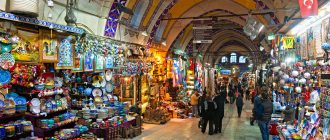Turkish silver antiques are highly desired by collectors around the globe. Whether its coins of pistols you want, read our guide for more facts and information…
Turkish antiques are amongst the most cherished antiques as they have a lot of rich history and culture attached. There a lot of antique pieces which come in great variety and so there is something for everyone.
Turkish antiques can be found all over the country like hidden treasures in every city, market and shop waiting to be explored. Turkish antiques include furniture, home decoration items such as paintings and rugs, textiles, jewellery, coins, glassware and crockery.
Silver antiques are the most popular amongst the Turkish variety. The most sought after pieces are silver jewellery and antique weaponry.
Weapons
There is a vast collection of different Turkish antique weapons. The variety includes daggers, long arms, rifles, small arms, pistols, oriental flintlocks and muskets.
Different weapons belong to different eras for example some belong to the 16th to 20th century when firearms were extensively used in warfare. Others made for the Turkish aristocracy during the 17th-18th century. Some weaponry comes with floral or vine decoration, set with gems and beadwork. They are classified as luxury items and are valued more.
The ‘Khanjar’ or the Turkish dagger comes with engraved decoration of eastern silver all over. They have circular bosses that come with niello inlay which are unique to Khanjars. The quality and condition of the antique weapons vary. Some come in good condition and so are valued more. Others value less and may show visible signs of use.
Daggers can be purchased very cheaply if you search in small shops or the local coin shop. But better quality, more valuable and unique pieces can be found in Istanbul.
Jewellery
Antique silver jewellery dates back to the 16th century when it was made by palace silversmiths. The silversmiths and jewellers worked under the chief treasurer. Today the antique collection is extremely limited compared to the work that was being made in those days. Antique silver jewellery shows the use of common techniques such as filigree, open work and engraving.
The silver antique jewellery belonging to the 16th century shows the heavy use of decorative arts and motifs. The early pieces have branches, leaves, roses, tulips, blossoms, carnations and other garden flowers.
The antique pieces belonging to the 17th and 18th century incorporated floral bouquets in the Ottoman artwork. With roses, curling leaves, bows, garlands and what emerged as the Turkish rococo style. Other motifs that became popular later on include carnation, pomegranates and the fluted lozenges.
It is recommended to check the hallmark when purchasing silver antique jewellery to help you identify whether the piece is genuine or not.
Where to find Turkish antiques?
The largest variety of Turkish silver antiques can be found in Istanbul which is the centre of all trade. There are a large number of antiques shops located here and many people who appreciate them.
Head out to the Old Bazaar section of the Grand Bazaar to find unique and interesting years-old pieces. Here you can find silver jewellery, old weapons, textiles, silver plates, glassware, home decor and antique Turkish furniture.
Turkish Antique Law
It is important to note that under Turkish law it is illegal to purchase, sell or possess and export Turkish antiquities. Items include statues, sculptures, coins, tiles, paintings and ceramics. There are negative consequences for the offenders.
Be sure to ask the shop keeper for a museum certificate which identities that what you are buying is not an antiquity and can be legally bought, sold or exported. A simple way to identify antiques from old pieces is their price. Antiques are mostly more expensive than regular items.
You can also purchase Turkish silver antiques online where Turkish exporters, collectors and retailers have made it easy to get hold of them.





